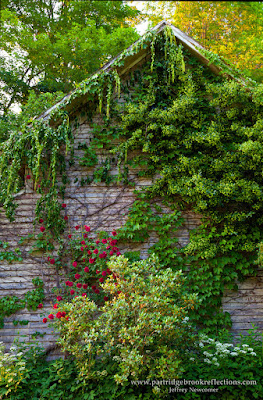 |
| Columbia River Gorge Oregon |
After our time in Yellowstone and the Grand Teton National Park, we
traveled across the desiccated, drought plagued, landscape of central Idaho and
Eastern Oregon to the comparatively lush Columbia River Gorge, east of Portland.
Happily we had a couple of days to explore before our trip climaxed with
Katherine and Rama's wedding in Hood River. It
was refreshing to escape the dry landscape to the dense forest and spectacular
waterfalls, and to tour the farms and orchards around the gorge. Of course the
whole region is dominated by 11,249 foot Mount Hood floating on the horizon to
the south. Although on a different scale, Mount Hood has a similar iconic,
"stand alone" stature as that of Mount Monadnock in my home corner of New
Hampshire.
Mountain Orchards
The Hood River Valley is filled with lovely orchards and farms, featuring
pears, apple, and some of best cherries I have tasted. Although a bit late in
the season, the flowers were standing up well to the heat and we found a
Lavender farm spreading a blue carpet before distant Mount Hood. The valley's
many vineyards also provided a nice variety for the wedding party.
Mount Hood lies south of Hood River and is Oregon's highest point. The
glacier above the Timberline lodge provides the only year-round, chairlift
serviced, down-hill skiing in the United States. On a warm afternoon, we
traveled up to the classic 1930s lodge, on the south side of the mountain, at
6000 feet. The snow capped mountain contrasted nicely with the fields of
wildflowers and with the lines of skiers heading to the glacier.
Waterfall Alley
One of the most unique photographic attractions of the Columbia River Gorge
are the waterfalls. Lining a 13 mile stretch of a scenic byway along the Oregon
side of the gorge, are an amazing collection of
dramatic falls, all easily assessable, at the road-side or along lovely trails.
It is with good reason that this is called "Waterfall Alley". Knowing how
popular these sites are, I was glad that I got up at dawn to explore the
route. I was able to get to three waterfalls, that morning before the crowds
arrived, including Horsetail,
Multnomah and Wahkeena. Sadly Latourel falls was
closed for construction. Multnomah Falls is the most famous, and deservedly so.
The two tier falls drops a total of 620 feet with a perfectly positioned fairy
tale foot bridge spanning the gap between the two levels.
Even at 6 am I had to
wait a few minutes for the young lovers to leave the bridge for a more secluded
spot, allowing the one other photographer and I to get our pristine shots. It
was well worth the early hour. Two days later I came by again at about 11 AM. It was impossible to park within a half mile of the falls
and as I rolled by I
could see that there were at least 30 people crowding the bridge. I was not
surprised to discover that nearly 2 million people visit Multnomah Falls
annually. On that second trip along the scenic highway, Susan and I hiked the
short trail to Bridal Veil Falls, another beautiful two tier waterfall in a more
secluded setting. I wish I had the time to hike to some of the other falls
along this remarkable stretch of road, but it was amazing that over a couple of
hours I was able to experience so much world class falling water.
 |
| Wahkeena Falls |
 |
| Multnomah Glimpse |
 |
| Bridalveil Falls |
And A Wedding
 |
| Katherine & Rama |
After the party Susan and I spent a couple of
days exploring the Oregon coast south of Portland, before flying home. I'll
share some of those photos next week as I continue to work through the more than
2000 images from this amazing trip.
It has been tough to catch my breath from our
"vacation", since today I had to set up a
show at the wonderful Burdicks Restaurant in Walpole New Hampshire and I will
be at the "Art in the Park" in Keene New Hampshire, all this coming weekend.
Pray for good weather and come visit if you are in the area. I'll be the guy
sleeping in the lawn chair.
Jeffrey Newcomer







































